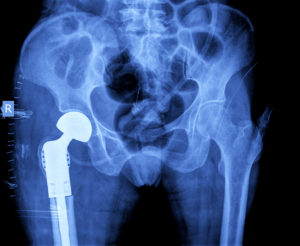AARP Hearing Center
More Price Transparency Needed for Implantable Devices
By Keith Lind, September 6, 2017 01:26 PM

Implantable devices, such as hip replacements and heart valves, are a central part of medical treatment today. Americans receive about 370,000 cardiac pacemakers and about 1 million total hip and knee replacements per year. Despite how common the use of implantable devices is, little information is publicly available on the prices paid for these devices in the United States. Limited information about prices and performance of many implantable devices has raised concerns that providers, consumers and insurers may be paying too much for these devices.
Insight on an Important Issue
A recently published AARP Public Policy Institute Insight on the Issues examines the market for implantable devices. It looks at financial incentives for manufacturers, hospitals, physicians, and payers, and the impact of the current market structure—especially the lack of price transparency—on competition.
The report, “Understanding the Market for Implantable Devices,” finds that a dearth of relevant information makes it difficult for buyers to assess the value of many implantable devices. While hospitals are the primary direct purchasers of most high-cost implantable devices in the United States, consumers and insurers pay for these devices indirectly as part of the procedure to implant them and thus, are also concerned about the cost of these devices.
Lack of price transparency makes it difficult for buyers to get comparative data on prices and limits their leverage to negotiate lower prices. Through the use of restrictive contract provisions that act as “gag clauses,” manufacturers can obscure device prices.
Meanwhile, buyers are often unable to get data on quality and clinical outcomes associated with implantable devices. This means that hospitals, physicians, and patients are unable to compare the performance or value of comparable devices.
The issue is more complex than one might think. Some have suggested that mandatory public price disclosure would strengthen the bargaining position of buyers and help drive down the prices of implantable devices. Advocates argue that the public availability of real cost and quality information can affect the market, promoting competition that can lower costs and improve quality. Critics have suggested transparent pricing could result in higher device prices. Manufacturers, some experts say, could use publicly available price data to collaborate and raise prices, especially in highly concentrated markets for implantable devices. To address these concerns, approaches like restricting access to pricing data to buyers may prove more successful that full public disclosure. However, even restricted price data could leak out to manufacturers. In any case, without more information about prices and performance, buyers are likely to remain in the dark about the value of implantable devices.
Further, the incentives of hospitals and physicians often diverge, sometimes sharply. Although hospitals typically pay for implantable devices, the surgeons who insert them in patients typically make decisions about which devices to use. Physicians frequently have a close working relationship with a device manufacturer and may exhibit strong personal preferences for devices sold by the manufacturer.
Conflicts of interest can undermine competition in other areas as well. High-volume surgeons may receive payments from device manufacturers for activities, such as consulting and promotional speaking engagements. For instance, from August 2013 to December 2015, 10 larger implantable devices manufacturers and their subsidiaries paid over $1.3 billion to physicians and hospitals for consulting and research, promotional talks, and similar services according to federal government statistics. These financial relationships can cross the line to become illegal kickbacks to promote the use of a manufacturer’s device. While some industry trade groups have adopted a code of ethics that prohibits manufacturers from paying physicians for expenses that are unrelated to scientific and educational purposes, compliance is voluntary.
Toward Greater Competition
This PPI Insight on the Issues concludes that, for the benefit of consumers, buyers, and payers, policymakers should consider a number of options that would help strengthen competition in the market for implantable devices. Some policy options include:
- Increasing device price transparency by restricting gag clauses and requiring manufacturers to disclose prices.
- Improving availability of information on implantable device performance and clinical outcomes.
- Requiring disclosure or imposing restrictions on abusive marketing practices.
- Encouraging containment of device prices through payment and delivery reforms.
- Increasing competition among device manufacturers.
No question, policymakers’ careful consideration of the topic is in order.
In another blog post, I discuss another Insight on the Issues that explores the FDA’s process for approval and oversight of implantable devices. That paper suggests policy options that could both strengthen and streamline the process to better protect public health and safety while also encouraging the development and marketing of devices that will benefit patients.

Keith Lind is a Senior Strategic Policy Adviser for the AARP Public Policy Institute, where he covers issues related to Medicare and medical devices.































































